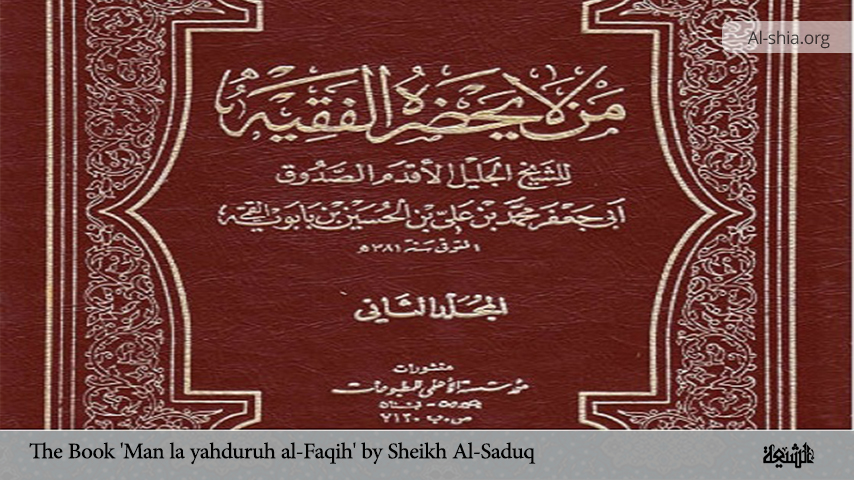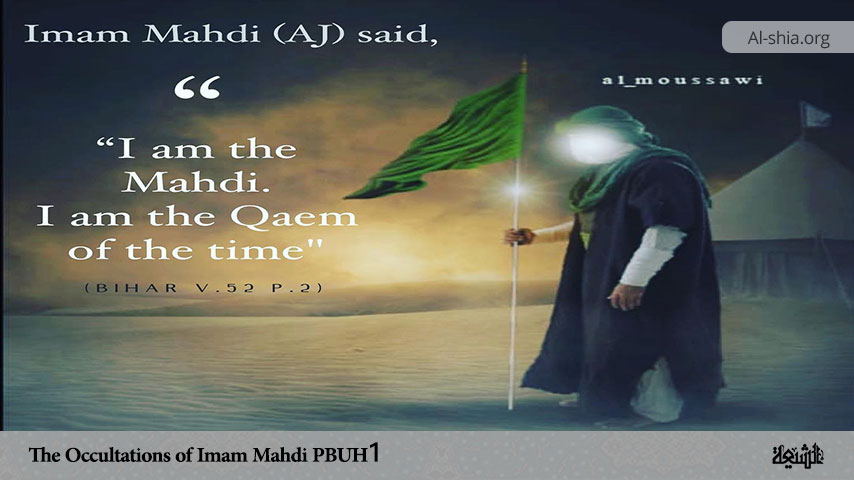Sayyid Abd al-Azim al-Hasani who is popularly known as Shah Abd al-Azim and likewise Sayyid al-Karim is one of the descendants of the eldest grandson of the Prophet Muhammad (s.a.w.a), al-Hasan ibn ‘Ali[1] (a.s). He was a renowned hadith narrator and transmitter[2]. Ibn Babawayh has compiled the Islamic narrations transmitted by Abd al-Azim in a collection which is famous as Jami’-al-Akhbar Abd al-Azim[3].
His Lineage
Sayyid Abd al-Azīm was a scion of that lofty and blessed tree of Prophethood, whose branches are spread out in Iran, Iraq, Syria, Yemen and other places. His father was “Abd Allah ibn Ali al-Qafa” while his mother was “Hifa’ bint Isma’il ibn Ibrahim”[4] Shaykh al-Najashi (d 450 AH/1058 AD), who was one of the Imami scholar and biographer has recorded his lineage at the beginning of his biography thus: Abd al-Azim ibn ‘Abdullah ibn ‘Ali ibn al-Hasan ibn Zayd ibn al-Hasan ibn ‘Ali ibn Abi Talib (a.s). Therefore, based on this, Sayyid ‘Abd al-Azim was separated from Imam al-Hasan (a.s) by four generations only.
His Birth
According to reports, Abd al-Azim al-Hasani was born on Rabi’ Thani 4, 173 A.H (corresponding to August 31, 789) during the rule of Harun al-Rashid[5]. Although there are different opinions regarding his place of birth, he was most likely born in Medina[6]. His teknonyms are Abul-Qasim[7] and Abul-Fath[8] while his popular titles are Shah Abd al-Azim and Sayyid al-Karim.
His Position before the Imams (a.s)
The station of Abd al-Azim before the infallible Imams of the Prophet’s household [Ahl al-Bayt] becomes known in the course of their statements in his favour. Thus, he was a brilliant traditionist, a source of reference in matters of faith, and trustworthy in matters of religion. Ibn Qawlawayhi narrates from ‘Ali ibn al-Husayn ibn Musa ibn Babwayhi, who narrates from Muhammad ibn Yahya al-Attar, who narrates from some of the natives of Ray, (one of whom said): ‘I visited Abu al-Hasan al-’Askari[9] (a.s). He asked me: “Where were you?” I replied: “I was visiting the grave of al-Husayn ibn ‘Ali (‘a).” He said: “However, if you had visited the grave of ‘Abd al-Azim which is situated near you, then your status would have been similar to the one who visited al-Husayn (a.s)[10].”
In addition, it is clear from what Sahib bin ‘Abbad narrates, that Sayyid ‘Abd al-Azim was a ‘source of reference’ in matters of the faith and an interpreter of Islamic law for the Shi’ites concerning issues which seemed ambiguous and unclear to them. Thus Abu Turab al-Ruyani says: ‘I visited ‘Ali ibn Muhammad (a.s) in Samarra ‘and I asked him some questions relating to the permissible and impermissible. He answered all of them. When I was bidding him farewell, he said: “O Hammad, if something regarding religion confuses or confounds you then refer it to ‘Abd al-’Azim, and convey to him my regards[11].”
His Position Before the Scholars
Many scholars and biographers have mentioned sterling statements in his favour. In a biographical treatise of Sahib ibn ‘Abbad about Sayyid ‘Abd al-Azim, he said: “I was asked about the genealogy of ‘Abd al-’Azim al-Hasani who is buried near the tree and who is the owner of that place too (may Allah sanctify his soul) and about his state and beliefs and the level of his knowledge and piety. Hence, here I mention all that in brief and with Allah lies success. He is Abu al-Qasim, ‘Abd al-Azim bin ‘Abdullah bin ‘Ali bin al-Hasan bin Zayd bin al-Hasan bin ‘Ali bin Abi Talib (may the blessings of Allah be upon him and his forefathers). He was a pious and religious man, a devout worshipper; reliable, trustworthy and truthful. He was learned in matters of faith and a proponent of the belief in the transcendence of God and His Justice as well as prolific in hadith transmission. He narrated from Abu Ja’far Muhammad ibn ‘Ali ibn Musa and from his son Abu al-Hasan, the one who resided in al-’Askar. There are letters from them both addressed to him. He also narrates from a group of the companions of Musa ibn Ja’far and ‘Ali ibn Musa (‘a). He had a book by the title “Kitab Yawm wa al-Layla[12].”
His Scholarly Heritage
Two books have been mentioned and attributed to Sayyid ‘Abd al-’Azim by the biographers[13]. These are:
1) Khutab Amir al-Mu‘minin (a.s). Al-Najashi mentions this work in his biographical entry for Sayyid ‘Abd al-Azim, number 651.
2) Al-Yawm wa al-Layla. Sahib ibn ‘Abbad has mentioned this work in a special treatise in which he documents the biography of Sayyid ‘Abd al-’Azim.
His Wife and Children
His wife, Khadija, was the daughter of his uncle, Qasim ibn Hasan Amir, known as Abu Muhammad. His children are named Muhammad and Umm Salamah[14]. Shaykh ‘Abbas Qummi wrote regarding ‘Abd al-‘Azim al-Hasani’s son, “Muhammad was a noble man known for his piety and worship[15].”
His Migration to Ray
Historical records do not identify the year in which Sayyid Abd al-Azim al-Hasani migrated to Ray and sought refuge there, nor do they inform us of the year in which he migrated from the Hijaz or Iraq to Ray. However, some have imagined that he may have migrated to Fars with the purpose of visiting Imam Ali ibn Musa al-Rida (a.s) and thereafter remained there throughout his remaining life until his death in approximately 252 AH/866 AD. However, this supposition is difficult to accept. This is because Imam al-Rida arrived in Tus in the year 199 AH/814 AD due to the persistence of Ma‘mun [and passed away in 203 AH/818 AD]. Thus, to suppose that Sayyid ‘Abd al-Azim stayed in Fars from approximately that time till the year 252 AH/866 AD is difficult to accept especially when it is known that the prevailing circumstances during the reigns of the three Abbasid caliphs (Ma’mun, al-Mu’tasim and Wathiq) were somehow favourable and positive for the Shi’ites. In view of this, there is possibility that Sayyid ‘Abd al-Azim fled the Hijaz or Iraq during the reign of Mutawakkil when the circumstances had changed and become particularly difficult for the members of the Prophet’s household and their Shiites.
Thus, in those difficult and harsh circumstances against the Shi’ites and their scholars, Sayyid ‘Abd al-Azim fled to Ray [in Iran] and remained there far from the eyes of the people.
His Demise
It is reported that Abd al-Azim al-Hasani passed away on Shawwal 15, 252/October 29, 866, during the time of Imam al-Hadi (a.s)[16]. There are conflicting reports about the cause of his death. Fakhr al-Din al-Turayhi writes, “One of the children of Abu Talib was buried alive in Rey, and he was Abd al-Azim al-Hasani.[17]” However, Wa’iz Kujuri says, “I researched about Abd al-Azim al-Hasani in the books of ‘Rijal and Ansab’. I did not find any reliable report about his martyrdom[18].” Finally, Najashi reports that “Abd al-‘Azim al-Hasani became ill and passed away[19]“.
Conclusion
Sayyid ‘Abd al-’Azim al-Hasani is one of the descendants of the Prophet through the lineage of the elderly son of the Commander of the Faithful, Ali ibn Abi Talib and Lady Fatima al-Zahra. A glance at the traditions transmitted by him shows that he had close associations with the two Imams, Muhammad ibn ‘Ali al-Jawad and ‘Ali al-Hadi (a.s) and at the same time, his close links with the prominent authorities of the Hadith.
Sayyid ‘Abd al-Azim possessed complete knowledge of the religious sciences and the Holy Qur’an. He is considered as one of the leading Shi’ite theologians and the narrator of the traditions of the Infallible Imams (a.s). His tomb is located in Ray, Tehran, the capital city of Iran and it is a regular pilgrimage site for the Shiites.
References
[1] . Mīrdāmād, Muḥammad Bāqir ibn Muḥammad, Al-Rawāshih al-Samāwīyya, p. 86.
[2] . ‘Adarudi, Musnad al-Imam al-Jawad (a.s), p. 302.
[3] . Ṣadūq, Muḥammad ibn ʿAlī, Al-Hidāya, p. 174 (introduction).
[4] . Ibn ʿInaba, Aḥmad ibn ʿAlī, ʿUmdat al-Ṭālib, p. 94.
[5] . Āqā Buzurg al-Tihrānī, Muḥammad Muḥsin, Al-Dharīʿa ilā Taṣānīf al-Shīʿa, vol. 7, p. 169.
[6] . A group of authors, Bar Āstān-i kirāmat, p. 5.
[7] . Qummī, Shaykh ʿAbbās, Muntahā al-Āmāl fī Tawārīkh al-Nabīyy wa l-Āl, vol.1, p. 585.
[8] . The articles collection of congress of Hazrat Abdul-Azim, vol.3, pp.181-185
[9] . This is the tenth Shi’ite Imam, Abu al-Hasan ‘Ali bin Muhammad, whom popular Shi’ism refers to with the honorific title al-Naqi rather than the title al-’Askari by which he has been described in this tradition.
[10] . Ibn Qulawayh, Kāmil al-Ziyarat, p. 537, chapter 107, hadith number 1.
[11] . Al-Muhaddith al-Nuri, Mustadrak al-Wasa‘il, vol. 3, p. 614.
[12] . This treatise was discovered by al-Muhaddith al-Nuri (d 1320 AH/ 1902 AD) who has quoted it in its entirety in the index of his work (Mustadrak Wasa ‘il al-Shi’ah). See: Nūrī, Khātimat mustadrak al-wasāʾil, vol. 4, p. 404.
[13] . Jafar Subhani, Sayyid Abd Al-Azim Al-Hasani, p. 12.
[14] . Ibn ʿInaba, Aḥmad ibn ʿAlī, ʿUmdat al-Ṭālib, p. 94.
[15] . Qummī, Shaykh ʿAbbās, Muntahā l-āmāl fī Tawārīkh al-Nabīyy wa l-Āl, vol.1, p. 585.
[16] . Āqā Buzurg al-Tihrānī, Muḥammad Muḥsin, Al-Dharīʿa ilā Taṣānīf al-Shīʿa, vol. 7, p. 290.
[17] . Ṭurayḥī, Fakhr al-Dīn al-. Al-Muntakhab fī jamʿ al-marāthī wa al-khuṭab, p. 8.
[18] . Wāʿīẓ Kujūrī, Muḥammad Bāqir ibn Ismāʿīl, al-Junnat al-naʿīm wa l-ʿaysh al-salīm fī aḥwāl ʿAbd al-ʿAẓīm al-Ḥasanī, vol. 5, p. 360.
[19] . Najāshī, Aḥmad b. ʿAlī al-. Rijāl al-Najāshī, p. 248.

















